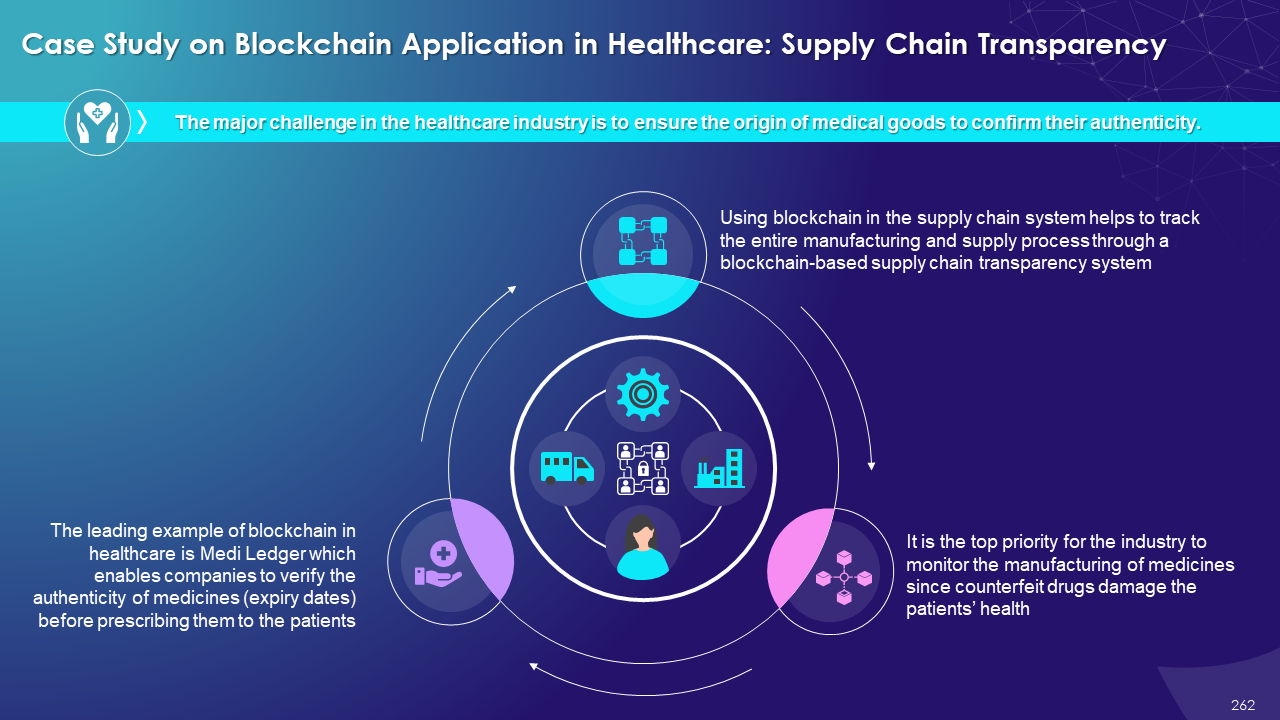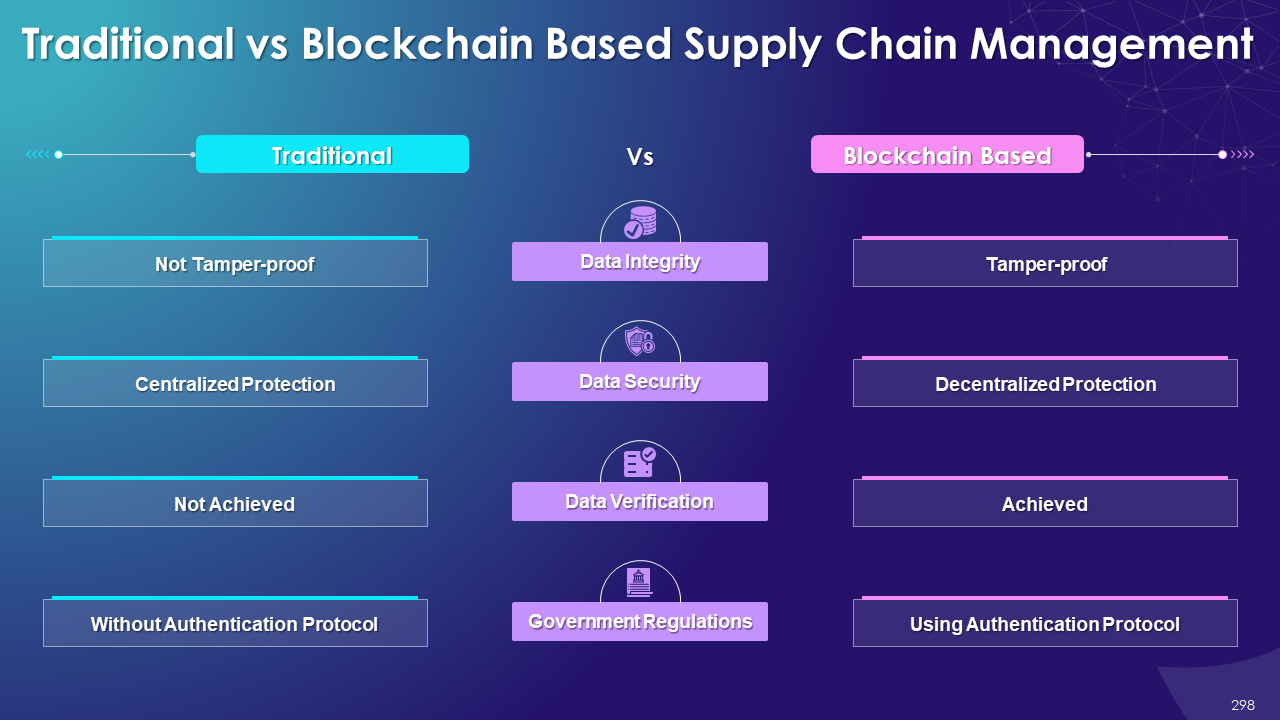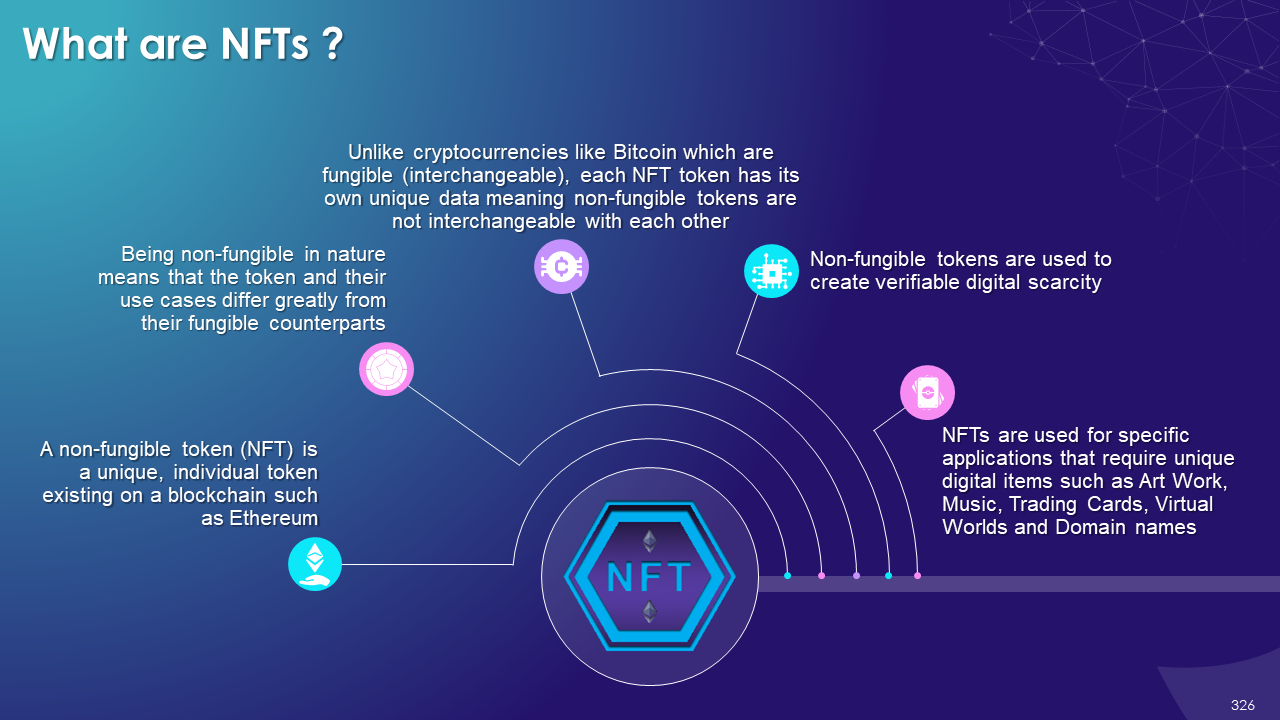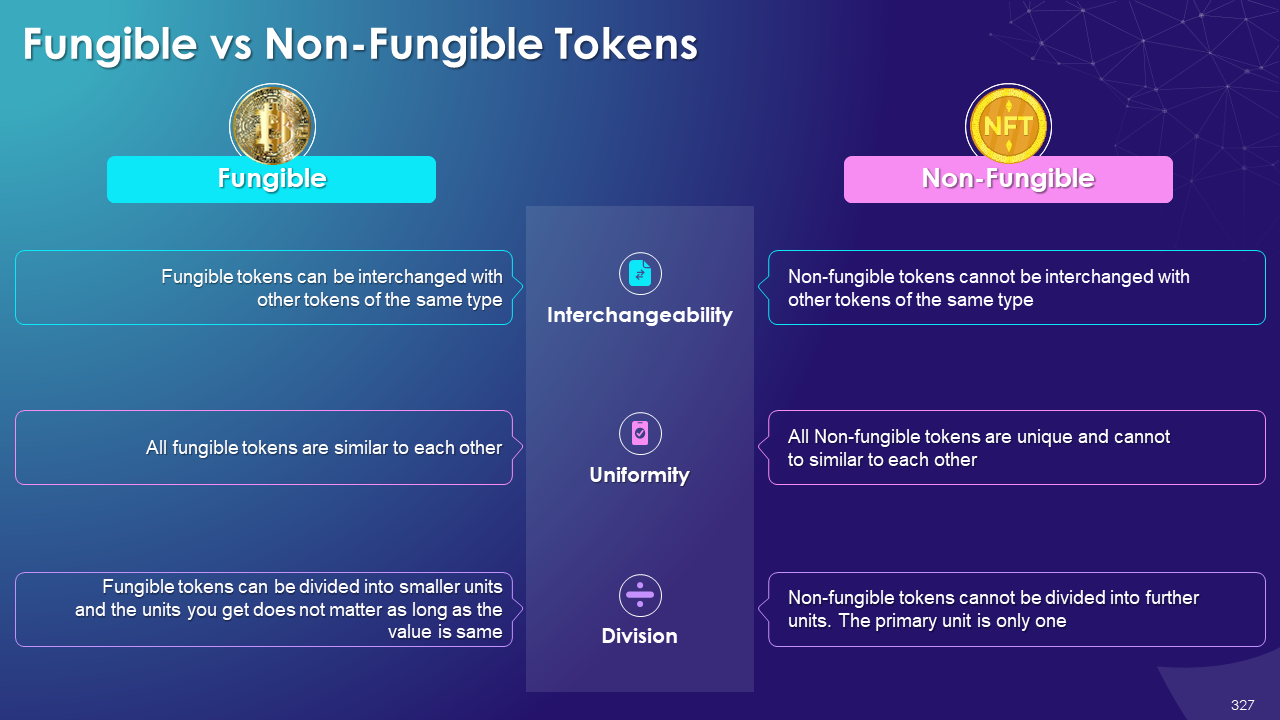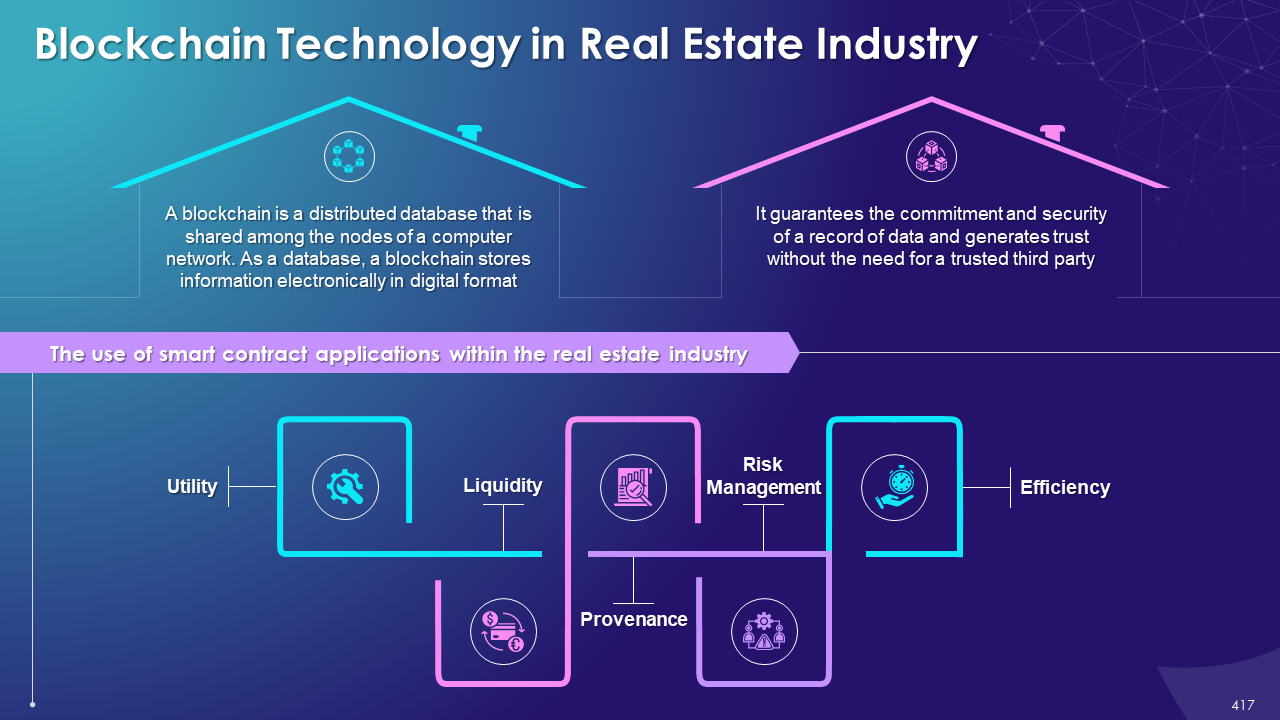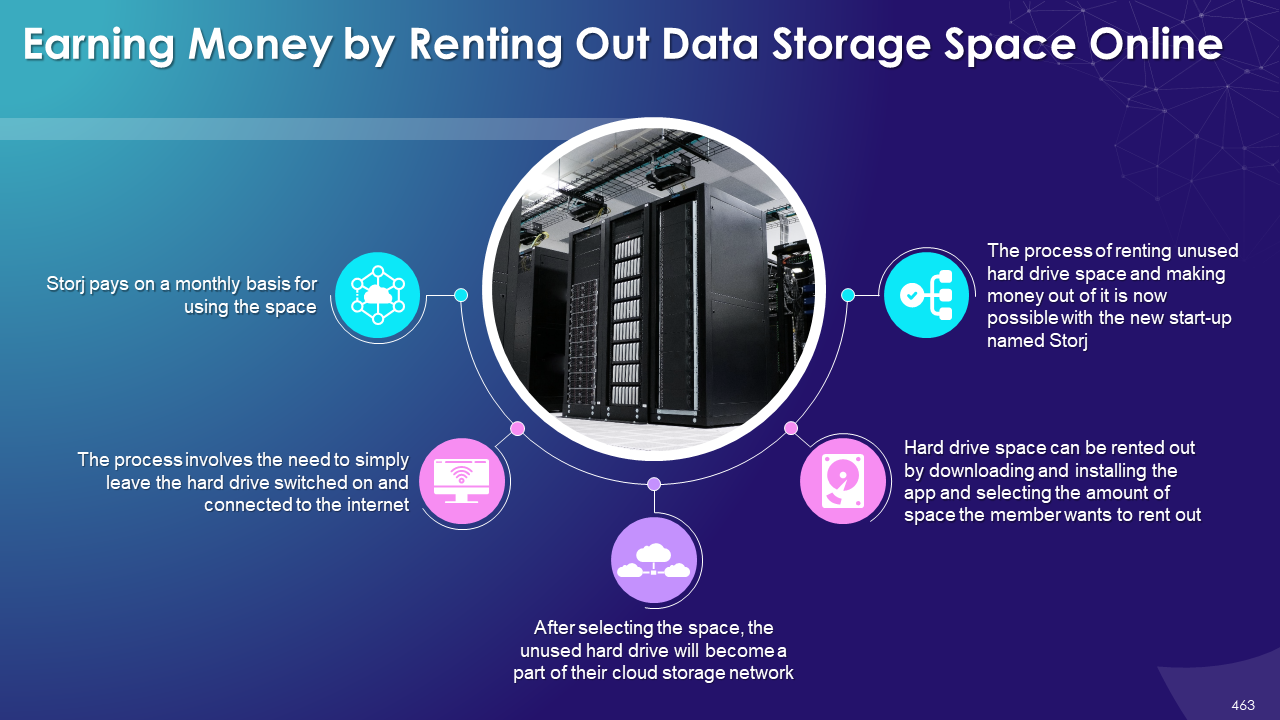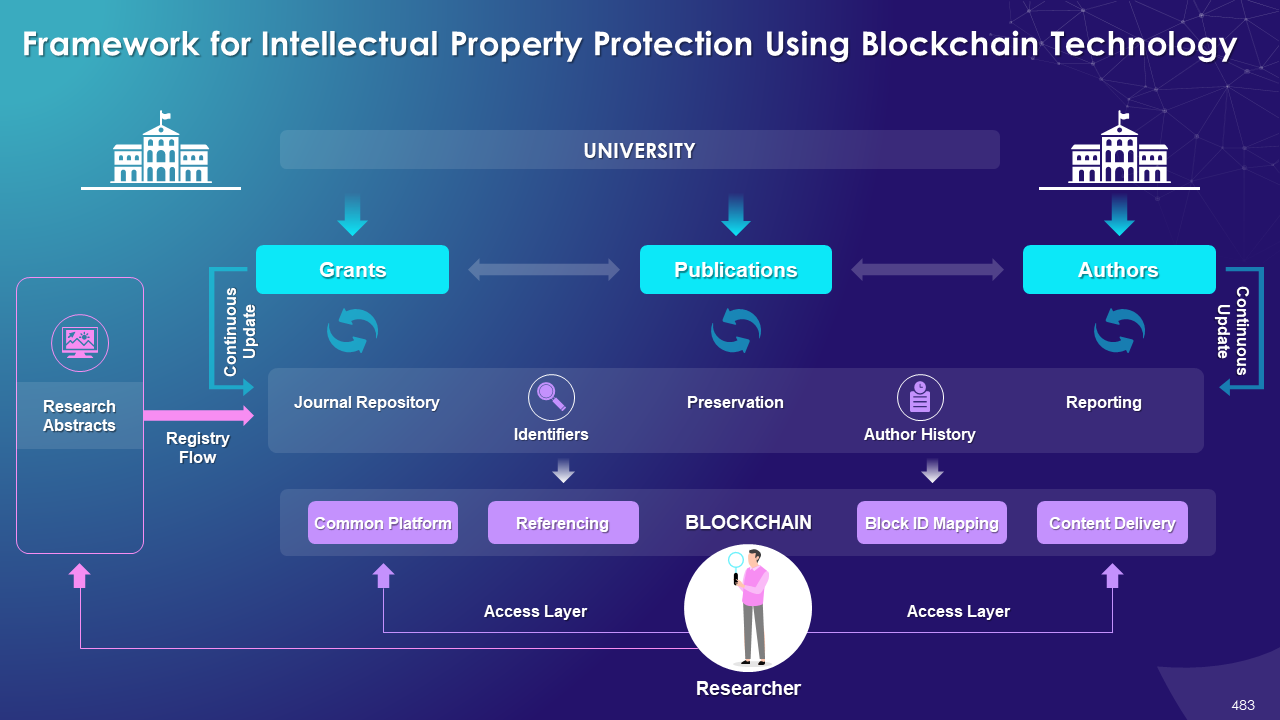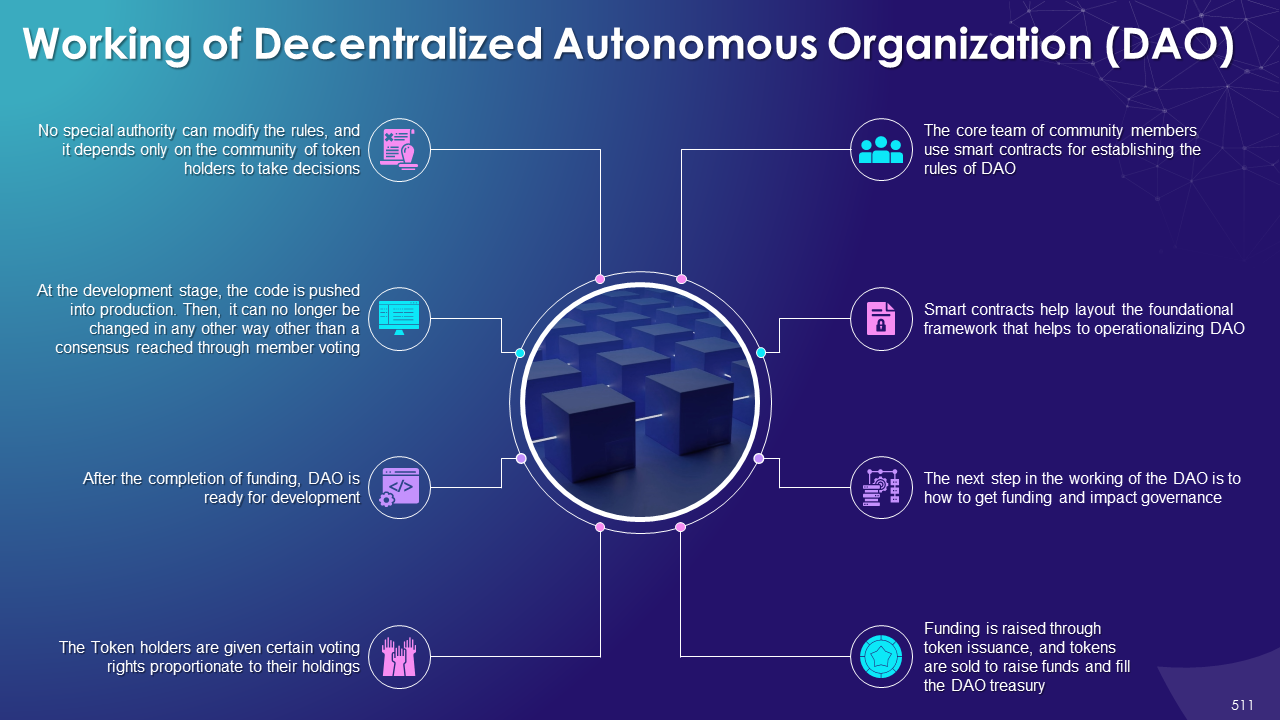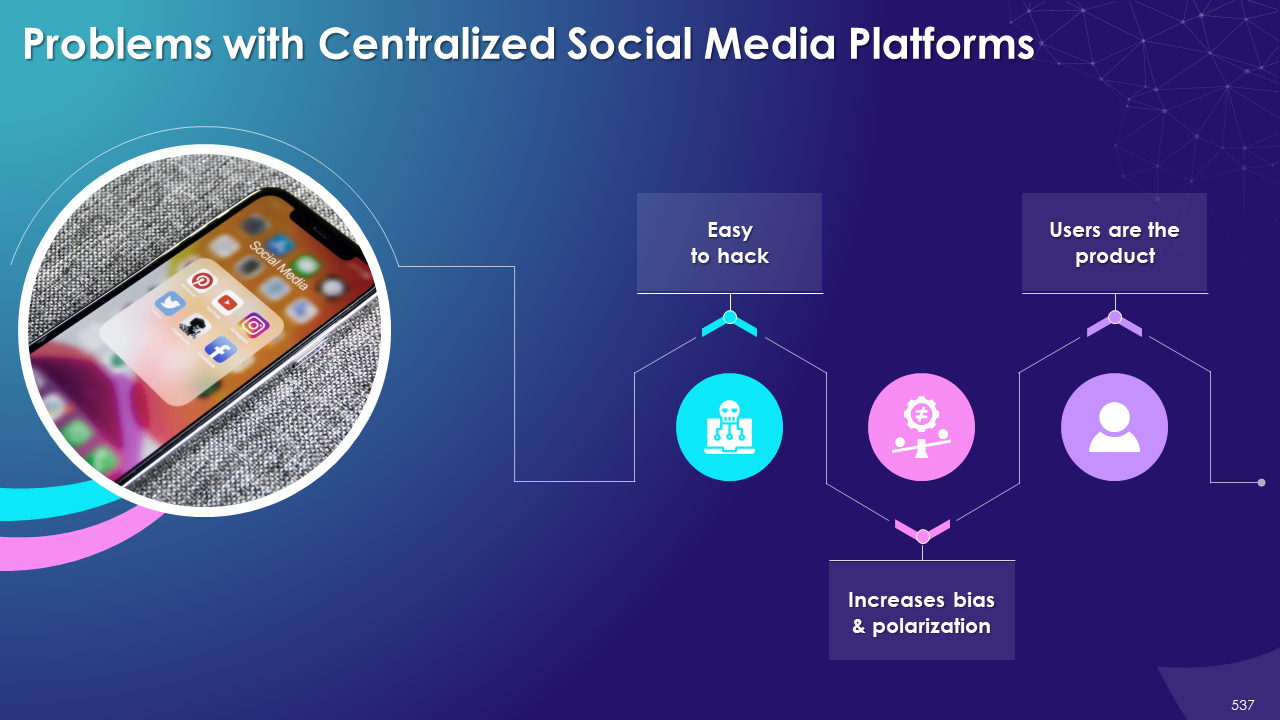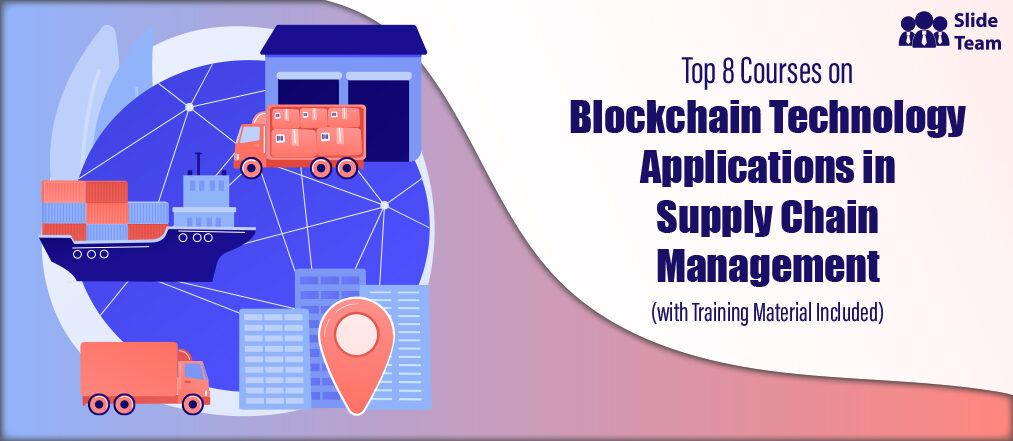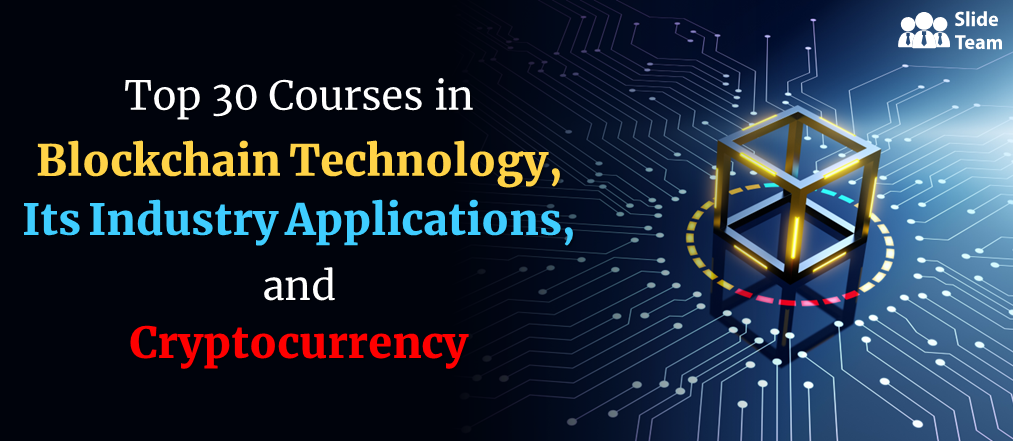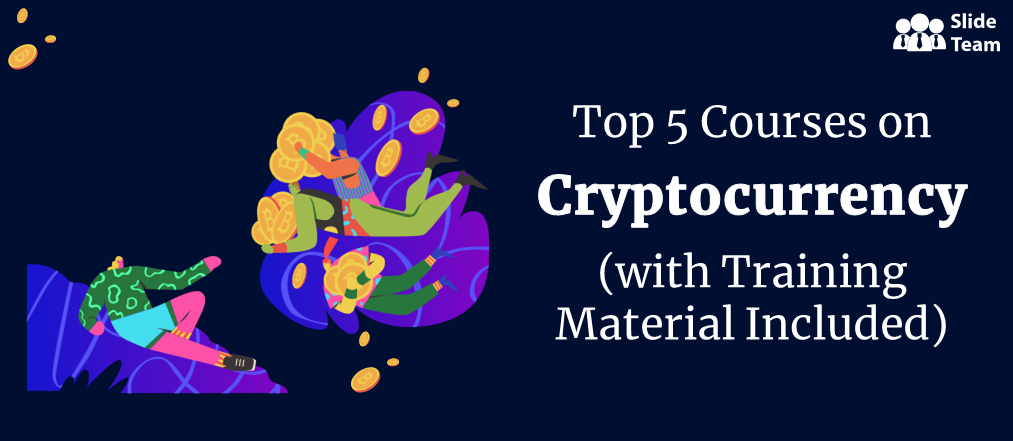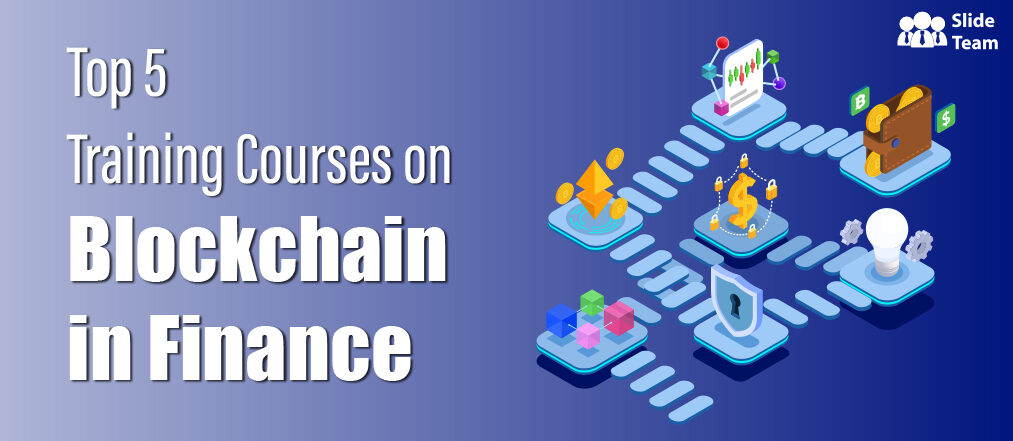When the internet was just starting out in the 1980s, opinions were split. Some believed, understandably at the time, that it was just a fad that would not last till the dawn of the millennium. They have, of course, been proved disastrously wrong.
The digital boom of the 21st century that the internet has spawned, has been, and will continue to be, exponential. Blockchain technology, a decentralized, transparent system, is part of the next significant lifestyle change that is introducing trust in global financial systems. This non-intermediary ‘arrangement’ has crept on undetected with most people unaware of how blockchain is shaping their future. Those who DO KNOW, well, their opinions are, again, split on whether blockchain is here to stay.
Internet Predictions Redux.
We are here to connect these two sets of people.
SlideTeam’s Comprehensive Training Curriculum on Blockchain Industry Applications has the following benefits for all stakeholders:
- Understand blockchain as a concept and be introduced to its applications; to also realize the significance of the change that blockchain will bring to our lives.
- Adapt better to challenges that blockchain will bring in its wake, in industries such as finance, healthcare, energy, real estate, and more. Both businesses and individuals will need to acclimatize if they wish to grow.
- At the end of the course, trainees get a comprehensive hands-on experience of blockchain applications.
| SESSION NUMBER | SESSION TITLE |
|---|---|
| SESSION I | FINANCE |
| SESSION II | HEALTHCARE |
| SESSION III | SUPPLY CHAIN |
| SESSION IV | NON-FUNGIBLE TOKENS (NFTs) |
| SESSION V | ENERGY |
| SESSION VI | REAL ESTATE |
| SESSION VII | DATA STORAGE SYSTEM |
| SESSION VIII | EDUCATION |
| SESSION IX | DECENTRALIZED AUTONOMOUS ORGANIZATION (DAO) |
| SESSION X | SOCIAL MEDIA |
| SESSION XI | WEB 3.0 |
Trainers can download the content-ready complete deck here and be well-prepared to showcase the all-pervasive nature of blockchain applications. We end each of our 11 sessions with our standard format of:
- Key Takeaways
- Let’s Discuss
- Let’s Test What We Have Learnt
Click here to access the Comprehensive Training Curriculum on Blockchain Industry Applications
SESSION I: FINANCE BLOCKCHAIN INDUSTRY APPLICATIONS
We begin the training with the most significant blockchain application, i.e., finance. After all, the blockchain was created to decentralize the financial system. With the basics of blockchain technology covered with how it is revolutionizing the concept of money itself, we deliver a succinct summary of the technology’s evolution and characteristics. Then, we elaborate on the 3Ds (Decentralization, Disintermediation, and Distributed Ledgers) that underscore the technology’s uses.
Click here to access the Comprehensive Training Curriculum on Blockchain Industry Applications
With a note on its limitations, we begin looking at blockchain-based cryptocurrencies. Cryptocurrencies get an introduction and a comparison with traditional (fiat) currency, with Bitcoin in the spotlight. We study the dozens of applications of blockchain in finance, such as venture capital, entrepreneurs' fundraising, asset management, payments, credit & loan, NFTs, and more.
Click here to access the Comprehensive Training Curriculum on Blockchain Industry Applications
With some theory under our belt, we look at a few case studies to observe blockchain in finance in action. Santander, HMLR, Bullion, Boom, and some more case studies are described in each slide. The problem introduced and the solution that blockchain provides is explained in significant detail. As always, things are never all gung-ho and we study the dowsnides to adopting blockchain in finance as well. This includes a largely unclear legal framework, settling value in real money, scalability, etc. To see the complete picture, without bias, the trainers need to drum this in as well.
Click here to access the Comprehensive Training Curriculum on Blockchain Industry Applications
We finish the first session with an appendix with slides that answer questions and topics such as “how blockchain promotes transactions,” “Centralized Finance (CeFi),” and “Decentralized Finance (DeFi),” etc.
SESSION II: HEALTHCARE BLOCKCHAIN INDUSTRY APPLICATIONS
We begin Session II with an overview of the healthcare industry as a whole and the impact of blockchain on it using statistics and a few tangible solutions already being deployed.
Click here to access the Comprehensive Training Curriculum on Blockchain Industry Applications
We switch the focus on certain domains of this industry and analyze the impact of blockchain on these, such as health insurance, pharma, drug & devices supply chain, health records, and more.
Click here to access the Comprehensive Training Curriculum on Blockchain Industry Applications
Like Session I, we go through a few case studies to see blockchain work its magic in practice. These include supply chain transparency, medical staff credential verification, the Estonian healthcare system, etc. We conclude the session with a look at the blockchain implementation process for a healthcare organization.
SESSION III: SUPPLY CHAIN BLOCKCHAIN INDUSTRY APPLICATIONS
With supply chain issues plaguing global businesses at the time of writing this blog piece, it is necessary to switch to a more reliable system. In this session, we discuss how blockchain is improving supply chain .
Click here to access the Comprehensive Training Curriculum on Blockchain Industry Applications
We present this dynamic process through the 3Ts (Traceability, Transparency, and Tradability) of blockchain, its impact, the working, the benefits, a comparison with traditional supply chains, and finally, the limitations.
Click here to access the Comprehensive Training Curriculum on Blockchain Industry Applications
Session III illustrates practical examples of blockchain technology in the supply chain through use cases and case studies, such as the Louis Dreyfus company, Walmart, IBM Food Trust, etc. We learn how blockchain is implemented here through its types, comparisons between public and private blockchains, the implementation process, etc.
We complete this session with a note on the top SCM (Supply Chain Management) companies using blockchain for their solutions, learn about Blockchain as a Service (BaaS), and present the blockchain implementation roadmap.
SESSION IV: NON-FUNGIBLE TOKENS (NFTs)
In this part of the training module, we look at NFTs and how these impact our lives. NFTs are the second-most popular application of blockchain technology, a close second to Bitcoin/cryptocurrencies.
Click here to access the Comprehensive Training Curriculum on Blockchain Industry Applications
We begin with an overview of NFTs and compare them to “fungible tokens.” These few slides are dedicated to NFTs’ features and benefits, such as immutability, transferability, security, liquidity, etc. We showcase some popular NFTs (Bored Ape #2087, CryptoPunk #3100, Ocean Front, etc.) and look at their use cases in establishing authority, clearing doubts over real estate ownership, securing medical records, and more.
Click here to access the Comprehensive Training Curriculum on Blockchain Industry Applications
We take some time to go through the variety of NFT assets, the most expensive NFTs sold (in 2021), the top 10 NFT markets, and the purchase, creation, and trade of NFTs. We learn of the ‘Ethereum Standards’ used in NFT development, essential factors to know before minting an NFT, and the IPFS (InterPlanetary File System).
Next, we get into more important topics such as NFT rights, energy consumption, security, avoiding NFT scams, the relationship between NFTs and crypto, and finally, the future of this significant application.
SESSION V: ENERGY BLOCKCHAIN INDUSTRY APPLICATIONS
The energy sector is probably not what you think about when it comes to blockchain technology. In Session V, we will showcase how wrong that presumption is. We kickstart this session with an overview of the energy sector with insights into the types of resources, key statistics, and the challenges it faces.
Click here to access the Comprehensive Training Curriculum on Blockchain Industry Applications
We move on to the impact blockchain technology has had on this industry with help of usage statistics and use cases such as peer-to-peer electricity trading, energy financing, grid management, etc. We look at local trading between small consumers and prosumers (consumers + producers) with a focus on its advantages as well as the limitations to the implementation of blockchain.
Click here to access the Comprehensive Training Curriculum on Blockchain Industry Applications
We complete this section with showcasing the names of start-up companies in the energy sector, such as L03 Energy and Consensus, Power Ledger, Sun Exchange, etc., which use blockchain technology.
SESSION VI: REAL ESTATE
A brick-and-mortar industry, blockchain has the potential to revolutionize real estate. In Session VI, we understand how blockchain technology solves the problems in this sector.
Click here to access the Comprehensive Training Curriculum on Blockchain Industry Applications
With a quick overview of the real estate industry, we present the impact blockchain has had on it through smart contracts, accelerating property search, property management, and more. We showcase how real estate fares with and without blockchain and list its advantages, such as no intermediaries, virtual notarization, decentralization, lower transaction costs, etc.
Then some more comparisons are listed while looking into property purchases, with and without blockchain, and understand how this boosts the real estate industry. We go through a case study of selling a property on blockchain to see this technology in action.
SESSION VII: DATA STORAGE SYSTEM
The application of blockchain decentralizes data storage, which gives control to everyone, and, therefore, to no single entity. Session VII introduces the trainees to what a data storage system is; the server system, device types, and cloud storage. It then contrasts centralized and decentralized data storage systems.
Click here to access the Comprehensive Training Curriculum on Blockchain Industry Applications
We begin showcasing the working and benefits of blockchain in decentralized data storage, such as verifiability, protection against data breaches, disintermediation, etc. We also present a few blockchain-based storage platforms like Arweave, Filecoin, Utopia, etc. to walk you through some real-life applications.
Click here to access the Comprehensive Training Curriculum on Blockchain Industry Applications
We note its advantages, such as high reliability, lower costs, increased speed, etc., as well as its limitations, such as cross-platform migration, complications in development, need for time to go mainstream, etc.
We take an interesting turn into renting an online data storage space and earning money through it and complete this session with a look at some use cases such as legal document management, intellectual property (IP), accounting, etc.
SESSION VIII: EDUCATION INDUSTRY
A quick overview of the education industry through key trends and statistics, and we are off the blocks in Session VIII!
Click here to access the Comprehensive Training Curriculum on Blockchain Industry Applications
The trainees get an insight into the impact that blockchain has had on this industry. We discuss, in detail, applications such as enhanced security systems, data confidentiality, publishing & copyright protection, etc., that make education more secure. We move on to learn the challenges that the industry faces in taking to blockchain, such as a slow adoption rate, scalability issues, and cost, to name a few.
Click here to access the Comprehensive Training Curriculum on Blockchain Industry Applications
Disciplina, Bit Degree, Blockcerts, ODEM, APPII, and Sony Global Education are six companies that currently provide blockchain solutions in education. Now, we move forward toward DAO.
SESSION IX: DECENTRALIZED AUTONOMOUS ORGANIZATION (DAO)
A DAO, using smart contracts, runs its operations with no single authority influencing it.
This concept might feel novel to your audience, so we begin this session with a detailed overview of a DAO. We explain what it is and its six types (based on purpose): Automated Market Maker, Grant, Social, Collector, Venture, and Entertainment.
Click here to access the Comprehensive Training Curriculum on Blockchain Industry Applications
We look at how it works with an engrossing chart and discuss how DAO compares to a traditional organization. We present DAOs’ characteristics, such as decentralization, better transparency, democracy, and automation. A spotlight is shown on its advantages such as resolving management issues, being community-based, having low error percentage, etc., and finally, its disadvantages, such as hierarchical nature, voting length, legal concerns, etc.
Click here to access the Comprehensive Training Curriculum on Blockchain Industry Applications
We take a look at some popular DAOs like Uniswap, BitDAO, Dash, etc., and go through the case study of a golf course created using DAO by a Mr. Mike Dudas to raise funds.
SESSION X: SOCIAL MEDIA
Social media is now an integral part of our communication abilities. We need it just as much as we need our voice to speak and ears to listen.
Click here to access the Comprehensive Training Curriculum on Blockchain Industry Applications
An expected reaction to civil unrest is that governments can block civilian access to social media and the internet (We talk about internet in the next and final section). With blockchain, at the risk of repetition, it gives power back to the people, all people.
Click here to access the Comprehensive Training Curriculum on Blockchain Industry Applications
In this part of the module, with a quick introduction to social media, we understand the major concerns with centralized social media, like an increase in bias and polarization. With these concerns in mind, we look at the features of blockchain-based social media, such as in-platform transactions, crowdfunding, etc. We rejoice in how technology contributes to creating a democratic ethos; be it society or monetary transactions.
Its advantages and disadvantages are noted and check out a few such networks like Fediverse, DeSo, and Mastodon. We complete Session X with a discussion on the future of this technology-application amalgamation.
SESSION XI: WEB 3.0
Fun Fact:
The internet we use today, right now, is Web 2.0, aka the second-coming of the internet. Web 1.0 was read-only with static pages (Let’s see if the trainees can find out who was able to publish content in Web 1.0!). Web 2.0 is, as expected, centralized, and we know that the government(s) can unilaterally decide what people can access.
Click here to access the Comprehensive Training Curriculum on Blockchain Industry Applications
It’s just not right, and this is what the next iteration of the internet, Web 3.0, aims to fix. In this section, we go through the evolution of the Internet up to Web 3.0. We learn the concept, key features, supporting framework, use cases, and related technologies of Web 3.0.
With this understanding, we look at the industries where Web 3.0 is expected to bring sudden change; these include DeFi, blockchain in the supply chain, DApps, DeSo, and DAOs. Access the training module to understand what these are, why they are important, and the disruption that is expected.
Click here to access the Comprehensive Training Curriculum on Blockchain Industry Applications
We deliver a presentation on the pros and cons of Web 3.0, such as data privacy & control and complicated functionality, respectively. We study the similarities between Web 3.0 and Metaverse before finally concluding the training and opening the floor for comments, discussions, and questions.
Curtain Call
As the training comes to an end, we hope that the trainees leave with an understanding of how blockchain has changed their day-to-day lives and equipping them with a sense of empowerment to adapt to these changes.
FAQs on Blockchain Industry Applications
-
What is the possible application of blockchain in an industry?
Blockchain applications in industry include:
- Supply chain management
- Digital identity verification
- Payments and money transfer
- Digital asset management
- Healthcare data management
- Voting systems
- Real estate record-keeping
- Energy trading
- Fraud detection and prevention
- Internet of Things (IoT) management
- Intellectual property rights management
- Cross-border payments and remittances
-
What industries could use blockchain?
Blockchain technology can be applied to various industries, including:
- Finance
- Healthcare
- Supply chain management
- Retail and e-commerce
- Real estate
- Government and public sector
- Energy and utilities
- Transportation and logistics
- Gaming and digital collectibles
- Insurance
- Agriculture and food supply.
-
What are examples of blockchain applications?
Examples of blockchain applications are:
- Cryptocurrencies (e.g., Bitcoin, Ethereum)
- Decentralized finance (DeFi) applications
- Smart contracts
- Digital identity management
- Supply chain traceability
- Asset tokenization (e.g., real estate, art)
- Predictive market platforms
- Healthcare data management
- Voting systems
- Cross-border payments and remittances
- Internet of Things (IoT) devices management
- Carbon credits and energy trading.
-
What are 5 Future blockchain applications?
Five future potential blockchain applications are:
- Decentralized autonomous organizations (DAOs)
- Predictive market platforms
- Virtual and augmented reality marketplaces
- Privacy-preserving data-sharing platforms
- Decentralized cloud computing services.





 Customer Reviews
Customer Reviews






